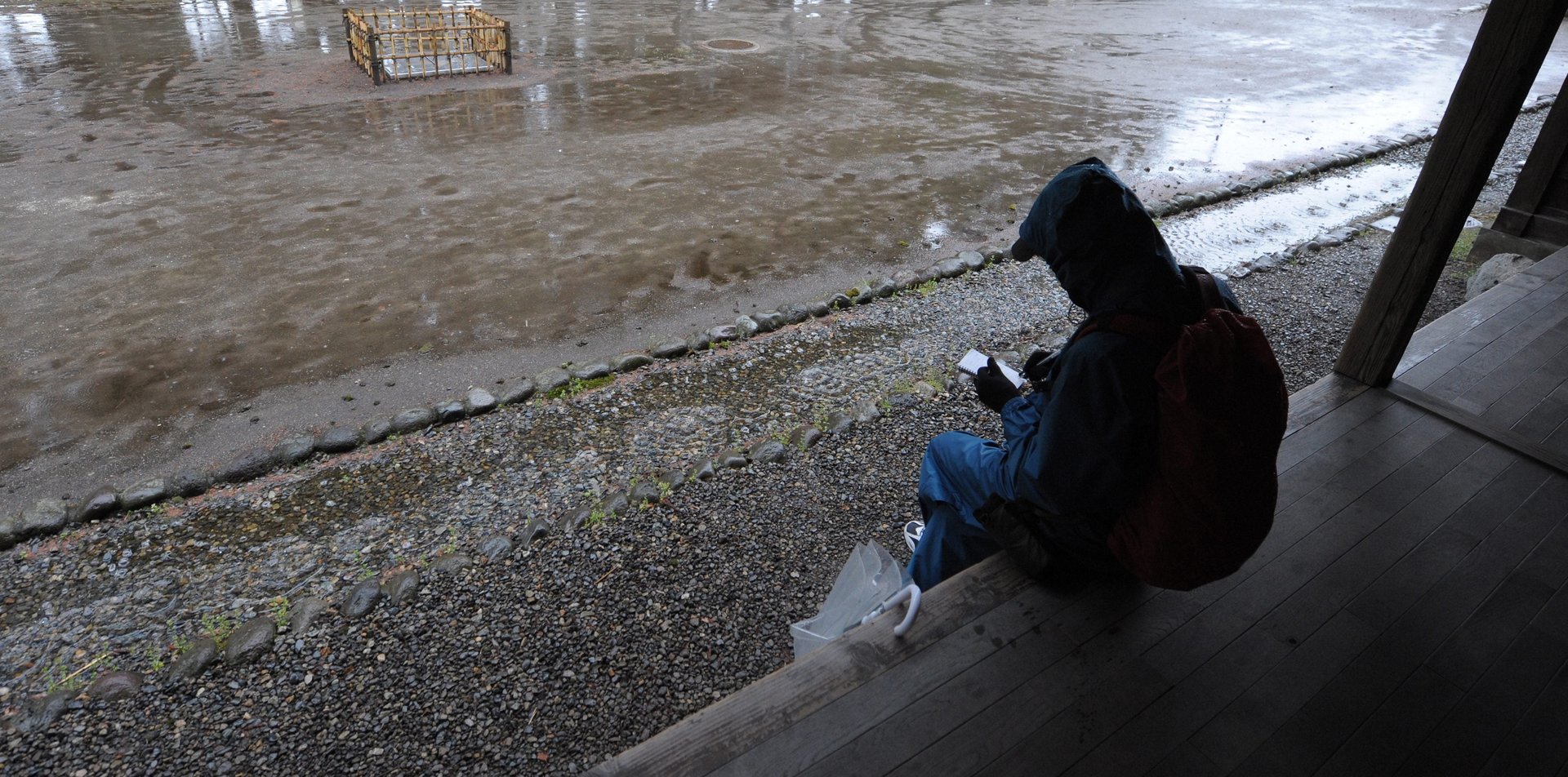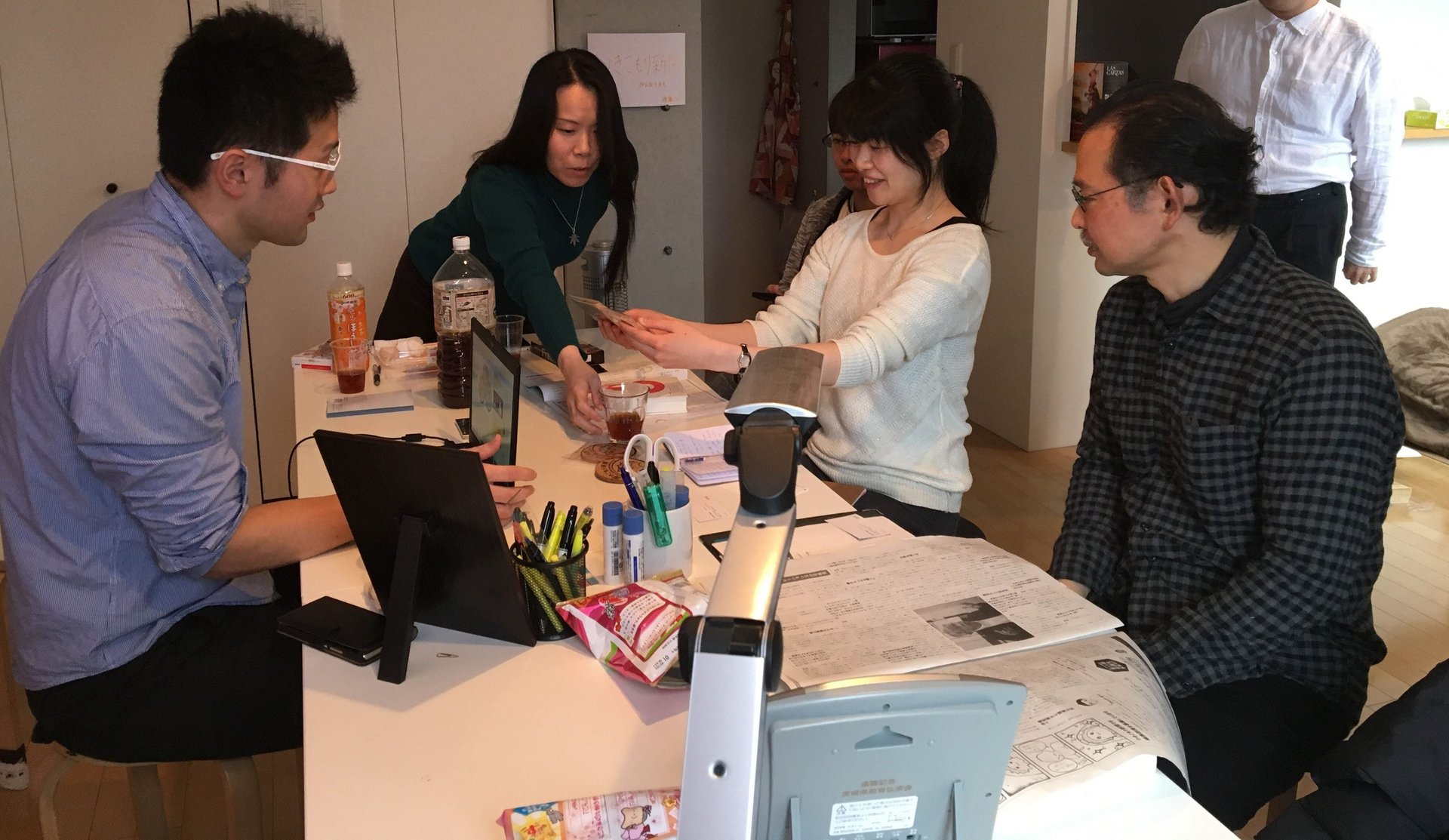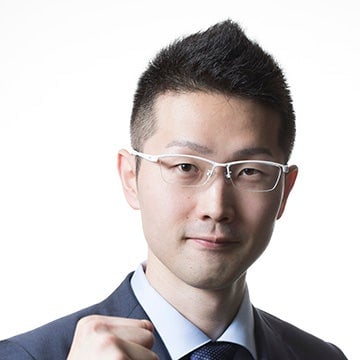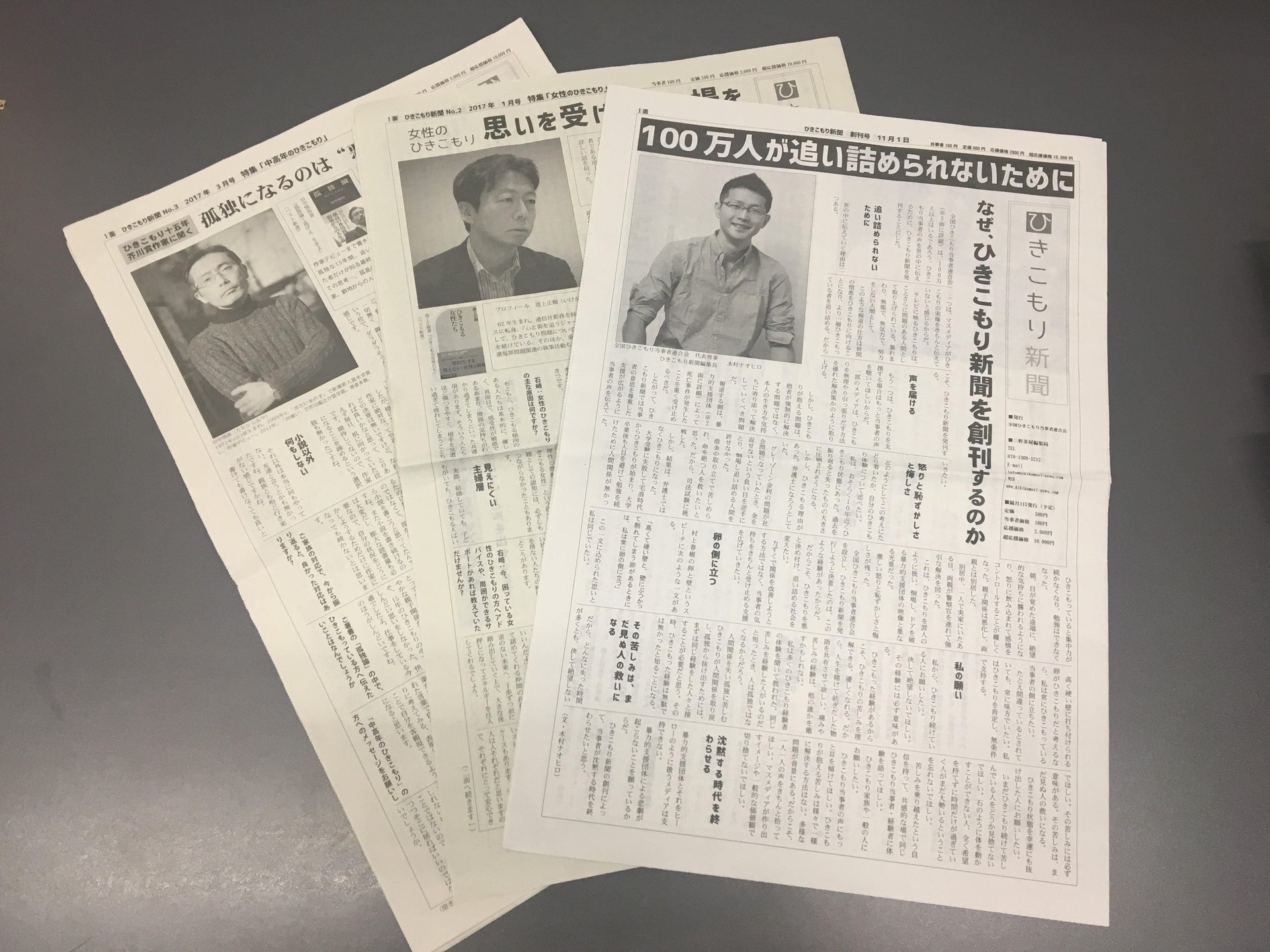Japan’s extreme recluses are coming together to create a newspaper for social outcasts
Tokyo


Tokyo
For most of his twenties, Naohiro Kimura was a recluse who often spent days shut inside his apartment. Since emerging from his reclusive state last spring, though, he has become the editor of a bi-monthly newspaper serving Japan’s community of social recluses, and hopes that through it he can draw some of them out—and change the Japanese public’s perception of them.
Kimura launched Hikikomori News (link in Japanese) in November, after 10 years of being a hikikomori on and off. The 32-year-old holds editorial meetings twice a month in a neat, cozy apartment in Tokyo’s Sangenjaya neighborhood. On a recent rainy day, six hikikomori gathered in the apartment and talked over bottles of oolong tea and chips. Stacks of the March edition of the paper—which focuses on the topic of employment—sat in the doorway. A4 pieces of paper printed with story ideas were stuck on one wall.
For some, physically getting to these meetings is in and of itself a hugely difficult task.
“When my hikikomori is severe, I can’t physically move. I am inside my futon all day. It’s so difficult, even to go to the toilet,” said Vosot Ikeida (not his real name), a 54-year-old contributor to the newspaper who has been suffering from depression for over two decades. “Today it’s raining, and I feel depressed.”
But once there, the hikikomori seemed to revel in having a purpose and being among understanding friends. “We can be honest here,” Ikeida said.
Hikikomori can refer both to the person and to the condition, but being a hikikomori is not necessarily contingent on a psychiatric diagnosis. According to research by two American psychiatrists in 2010, hikikomori is a “culture-bound syndrome” rather than a “new psychiatric disorder,” but mental health professionals have in the past evaluated some hikikomori as suffering from anxiety, obsessive-compulsive disorder (OCD), or schizophrenia, among other diagnoses.
“In a society where it is highly stigmatizing to use words like clinical depression, let alone schizophrenia, the term hikikomori has broad appeal as a socially acceptable term,” wrote the authors of the paper.

A million shut-ins?
According to a paper (link in Japanese) published by the Japanese government Cabinet Office in September, the number of hikikomori between the ages of 15 to 30 in Japan in 2015 numbered some 540,000, and marked a decrease of about 150,000 from 2010. Kimura, however, said that the survey understates the severity of the problem as it excludes those above the age of 40.
Kimura’s team took the government to task in the inaugural issue of Hikikomori News in November. An article headlined “The painful cry of those in their 40s” lambasted the government for downplaying the problem, and attributed the supposed decrease in hikikomori to red tape—those under 40 are the domain of the Cabinet Office, and those over are the responsibility of the Ministry of Health, Labor and Welfare. One female hikikomori in her 40s told the newspaper that the results of the government survey made her feel “erased” and “abandoned.”
One commonly used figure is that there are as many as a million people living in a state of hikikomori in Japan—a number proposed by psychologist Tamaki Saito who coined the term. Saito—who treated Kimura—identified the phenomenon in the mid-1980s, when young men with symptoms like lethargy and social isolation started showing up at his office, according to the New York Times (paywall).

The Japanese government’s official definition of hikikomori is people who haven’t left their homes or interacted with others for at least six months. The writers at the newspaper, however, emphasized that hikikomori come in many different forms, and that the stereotype of a young male confined to his bedroom, playing video games with next to no contact with the outside world is not a representative one.
28 year-old Yumiko Uno, for example, who draws cartoons for the newspaper, does not fit the government’s definition or the conventional stereotype—she teaches part-time at a tutor center and is talkative. She said she experienced a few separate stages of hikikomori, the first time after she dropped out of nursing school and lost her voice due to psychological issues. She said she was jolted out of that period of hikikomori because of the shock of the 2011 earthquake and tsunami in Japan.
Yuka Naruse, 40, a hikikomori for two decades and a writer for the newspaper, said that she has met many female hikikomori at support groups who became withdrawn only after they got married, because of pressure from society, their husbands, and their in-laws. Naruse herself has been diagnosed with OCD and has never worked full-time. The January issue of the newspaper dedicated itself to issues relating to female shut-ins.
Getting older
The government paper highlighted two worrying trends among hikikomori—like Japanese society at large, they’re graying. The data show that among hikokomori surveyed, those who became withdrawn at between 35 to 39 doubled to 10.2% in 2015 compared with a 2010 survey. People are also remaining in a state of hikikomori for longer—those who said they were withdrawn for over seven years in the latest survey stood at 34.7% compared to 16.9% in the 2010 survey.
The problem of aging hikikomori has been one of the main areas of focus for Kimura and his staff, who said they want to use the newspaper to communicate with the family members of hikikomori—many of whom have been caring for their children for decades and are themselves approaching death, making the question of what happens to their withdrawn children after they are gone an increasingly pertinent one.
In November, the bodies (link in Japanese) of an elderly couple and their 43-year-old son, who was said to be a hikikomori, were found in a house in Gifu prefecture, according to local media reports. The son’s body showed signs of starvation, and the family were said to be behind in their rent.

Printing a paper product of the newspaper is an important way to reach parents in troubled situations, some of whom may not know how to use the internet, said Kimura. Hikikomori News is sold online in PDF format, and is also distributed at various hikikomori events around the country—some of which are listed on the backpage of the newspaper, including a cherry-blossom-viewing gathering in Kanagawa prefecture, and meetings for parents of middle-aged hikikomori. Sufferers of the condition and their families pay a discounted price from the retail price of 500 yen ($4.40). Around 2,000 copies have been sold each month, according to Kimura.
Kimura said that he emerged from hikikomori by slowly rebuilding human relationships, for example by joining a running club and attending photography classes.
“It was very important when I was asked by a woman I met on Twitter to take a photo of her,” said Kimura. “When you feel that somebody needs you, you want to make an effort for that person”—especially when it’s a person of the opposite sex, he added.
Kimura also taught himself Adobe InDesign in the months following his emergence from hikikomori last year. He said he modeled his publication on a newspaper in Japan, Futoko News (link in Japanese), which focuses on another group of misfits—futoko (pdf), or people who refuse to attend school because of anxiety. He began by recruiting writers at hikikomori gatherings last fall. Fifteen people showed up to the first editorial meeting.
A culture of shame
Kimura became a hikikomori after he failed his law school exams, and described the following period as a time when he lived as a ronin, drifting aimlessly in life. When he went out, he made sure it was in the morning when his neighbors were asleep, and returned only when it was dark, rotating between venues such as family restaurants and libraries. His mother once called the police to ask them to protect her from him, said Kimura, without elaborating. He noted that there is a widespread perception in Japanese society that hikikomori are unstable or prone to violent acts, and said that one of the reasons he started the newspaper was to address those views, which only serves to push the shut-ins “further into a corner.”
While acknowledging that hikikomori-like phenomena exist elsewhere in East Asia, Kimura and others spoke of the intense pressure in Japan to conform to the mold of having a stable job and making money, and the stigma felt by those who don’t attain these ideals.
A study in 2012 found that many shut-ins come from middle class families, who typically place higher expectations on their children, and who are also able to support their children if they become hikikomori. “Toshi”, a 35 year-old hikikomori who writes for the newspaper, emphasized that the phenomenon emerged during the high-pressure years of the bubble, or “baburu,” economy, when Japan’s economy was booming in the 80s.
Kimura’s media venture won high-profile support from Kazumi Ieiri (paywall)—one of Japan’s most famous internet entrepreneurs as well as a recovered social recluse—who welcomed Kimura’s team to his office in February, and later tweeted about the experience of being a hikikomori.
“I think hikikomori is a situation where the knot is untied between you and society,”Ieiri wrote. “No need to hurry; you can tie small knots, little by little.”
Correction: An earlier version of this story said that Hikikomori News is a monthly newspaper. It publishes once every two months.